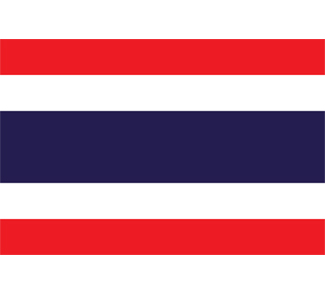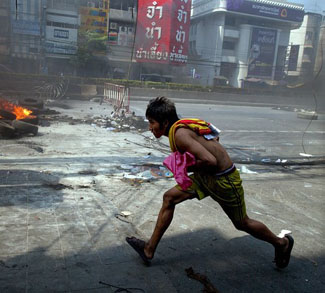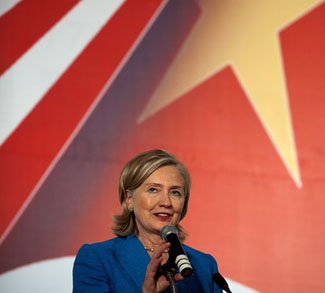With roughly 5,300 deaths since 2004, including 45 killed and 75 injured since the Malaysia-mediated negotiations between the Thai Government and BRN began, there are calls by opposition leader Abhisit Vejjajiva to suspend negotiations with the BRN until the level of violence is reduced. There are also risks that the military may go on the offensive again and conduct pre-emptive raids on suspected ‘terrorist’ hideouts.
These apparently stalled negotiations could be interpreted to mean that the BRN are not the sole voice for the various insurgent groups in the South and some of these groups feel angry that the BRN is grandstanding in public claiming to represent their grievances. In fact, if one drives from Hat Yai in Songkhla Province through Petani, Yala, and Narathiwat, what is most striking is the diversity and fragmentation of ‘Malay’ Muslims within the South. There are those who live by the coast, those that live in the mountains around Yala, those who live in rubber estates within Narathiwat, and the urban Malay Muslims. All have different interests, livelihoods, and leaders, but in all cases the vast majority is peace-loving people.
However what one will also see when making this trip around the south is the stark difference in the culture of the region with the rest of Thailand. And if one has some knowledge of Malay culture, the difference between the Muslims of the South and the rest of Thailand can be seen. The “Petani Malays” appear to live their lives the way they have for generations, and resist the imposition of both Thai culture and ‘globalization’ upon their communities.
Thai Army Chief Prayuth Chan-ocha’s call to build a border fence between Malaysia and Thailand to prevent insurgents freely moving across the border indicates that those behind the violence are actually not from the South itself. There are many rumors that most bombings and other acts of terrorism are actually undertaken by those who don’t live in the South and that’s why intelligence on the ground most often has difficulty in predicting attacks. They occur anonymously and without anybody claiming responsibility, where in fact some are actually acts of gangsters and retribution by other parties.
The recent film clips posted on Youtube on April 26th by Ustaz Hassan Taib, and a second video on May 24th by Abdulkarim Khalib of the BRN, both making demands, highlight that this is a ‘Malay’ issue and not a ‘Muslim’ one. Their statements highlighted the Malay history of Petani and their need to fight for the rights of “Bangsa Melayu Petani” or the Malay race of Petani. This is only the second time any demands have ever been made publicly, the first by the Petani United Liberation Organization (PULO) from Europe back in 1968. However these announcements might be more about the BRN trying to assert their authority in discussions with the government over the vast number of groups than anything else.
This shows the complexity of the problem. Violence originating from outside the South by unknown people, and a plea for the restoration of ‘Petani Malay Nationalism’ within the Thai State are paradoxes that must be reconciled and acted upon by the authorities. Clamping down on the citizens of the South by Thai security forces risks creating more local resentment, and being ineffective anyway, as these people are not the perpetrators of the violence.
Not understanding the unique Malay identities of the South is missing the whole reason why there are feelings of insecurity by local Malay-Muslims.
The problem of the South must be seen as an ethnic identity problem and not a religious problem. This point has fundamentally been lost. To the Muslim-Malays it’s about protecting traditions, language, culture, and religion.
So what is the solution to the violence in the South?
Unfortunately external engagement will only raise suspicions in the South as to the motives of the outsiders. The solution to the problems will only come from within the South itself. It won’t come from dialogues, negotiations, forums and lectures about how Muslims in the South must be responsible, etc. It will come from a changing consciousness at the community level.
However the problem here is most Malay-Muslims in the area wish to live their lives where they are, and not engage in the development that the rest of the country is going through. They see their traditional life as their aspiration. Most university graduates return to their villages rather than seek work in Bangkok or one of the other provinces. So this indicates that Malay-Muslims could be assisted in developing economic activities within the region of where they live to assist in raising standards of living.
The Thai authorities have been very successful in assisting rural communities through community vocational programs like the One Tambon One Product (OTOP) program, and this needs to be extended in the South with much more vigor. The Malay-Muslims of the mountain regions around Yala and Narathiwat must be assisted in developing their own concepts of self-sustainability. Poverty is still very much a major issue here. Community building projects run by the Malay-Muslims, for the Malay-Muslims may come to be very important.
But the real change as mentioned will only come from within. There is also a generational context to this situation where the older generation feels resentment and alienation, while the younger generation has a wide diversity of feelings that may not have hardened into the anger of their elders. This brings hopes that a change of consciousness on the part of the younger generation within the South may occur over time. This change may be promoted as more of the younger generation becomes engaged in social media where they may find new visions for their lives and region. There are plenty of precedents for this in other parts of ASEAN and within the MENA. However this is going to take some time, but this will enable a generational change if the Malay-Muslims of the ‘Deep South’ are going to integrate with the rest of Thai society, as other Muslims in Thailand have.
It looks like negotiations will lead nowhere. Regional autonomy may not be the solution as many academics are suggesting and Prime Minister Yingluck Shinawatra said she would consider during her 2011 election campaign. Autonomy may not satisfy all of the fragmented groups in the South and fighting may just continue.
The Thai strategy towards the South must change. Reports indicate that more than USD 7 billion has been spent on trying to quell this insurgency since its reemergence in 2004. Attacks made by insurgents must be separated from those made by criminals and particularly by those from outside the region. Insurgents have changed their tactics using new equipment that they have been able to acquire and carrying out targeted assassinations on government officials. The numerous police and army checkpoints and roadblocks do very little to put any check on the violence and in some cases make it easier for the insurgents to assassinate any official in a motor vehicle slowing down for the checkpoint. Most of the time the victims of random urban attacks are the Malay-Muslims themselves.
The struggle is about living a traditional lifestyle as a ‘Malay-Muslim’ in Petani, Yala, and Narathiwat. This should not be forgotten. There are many illusions here in the South which require re-evaluation to understand what’s is really going on. This may require a major realignment of strategy, focusing on intelligence by the military, rather than any show of force, which may pay off. One can never defeat the spirit of the Petani-Malay. This will never happen. It’s about enabling integration without the loss of cultural identity, something which Thailand should be able to entertain.




